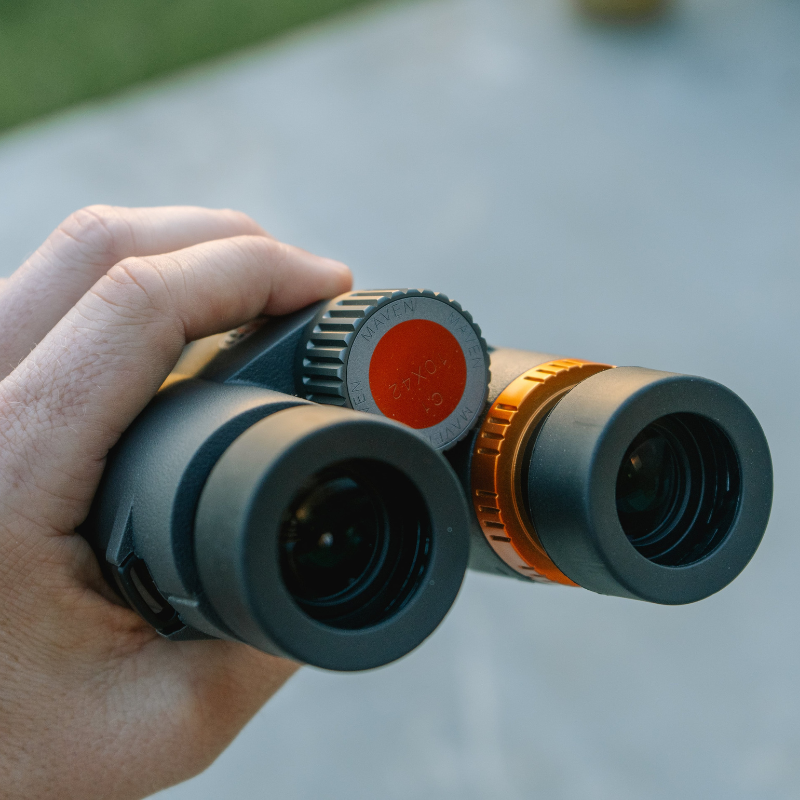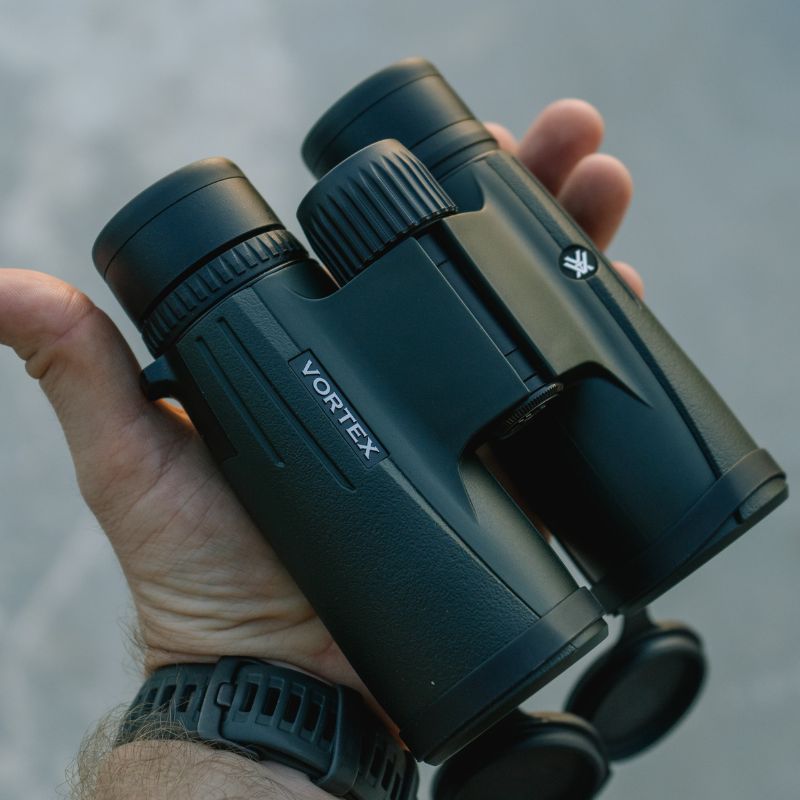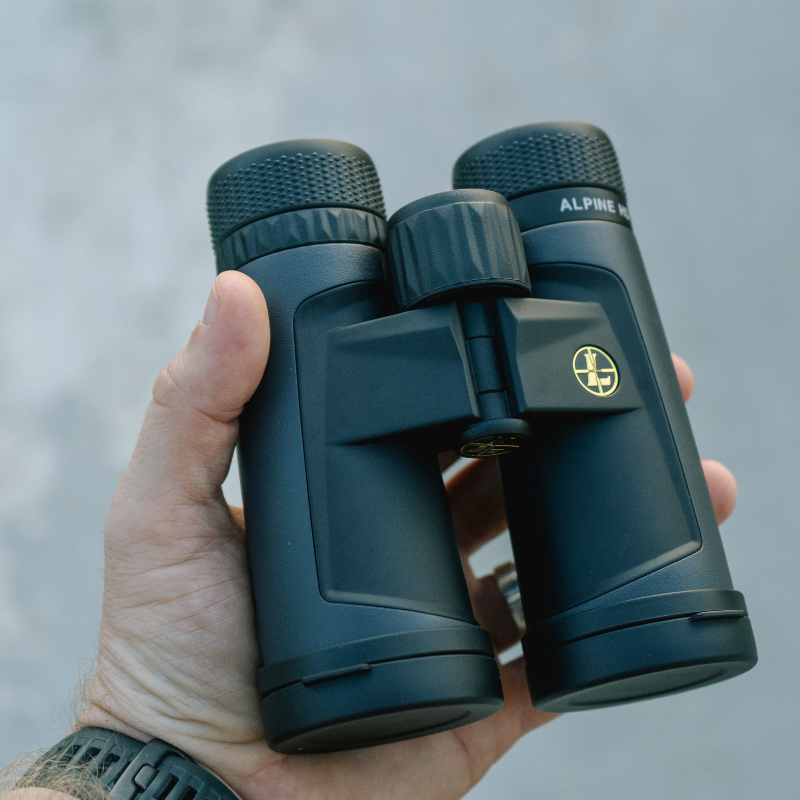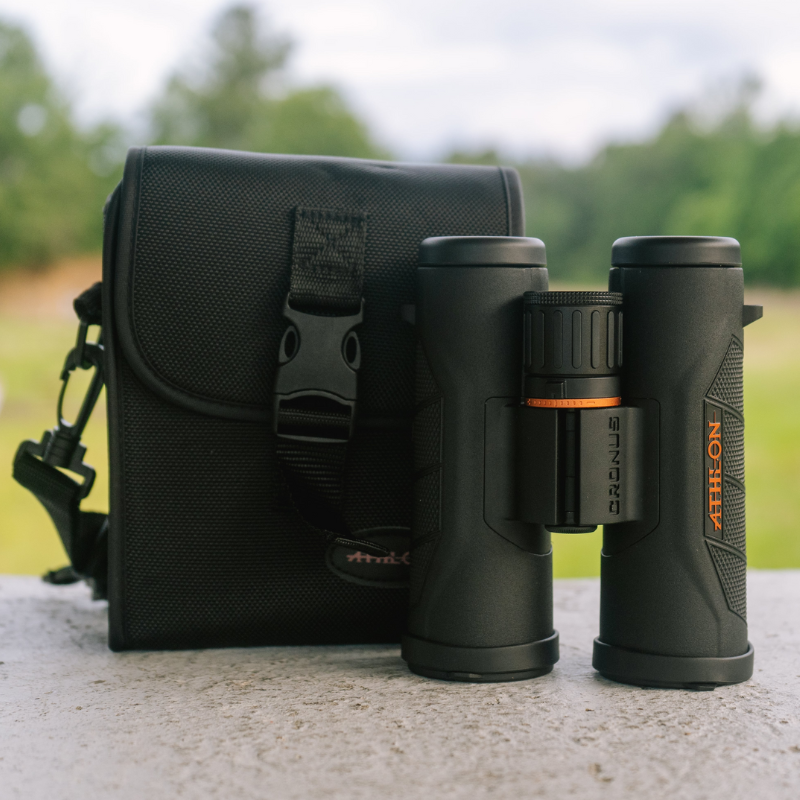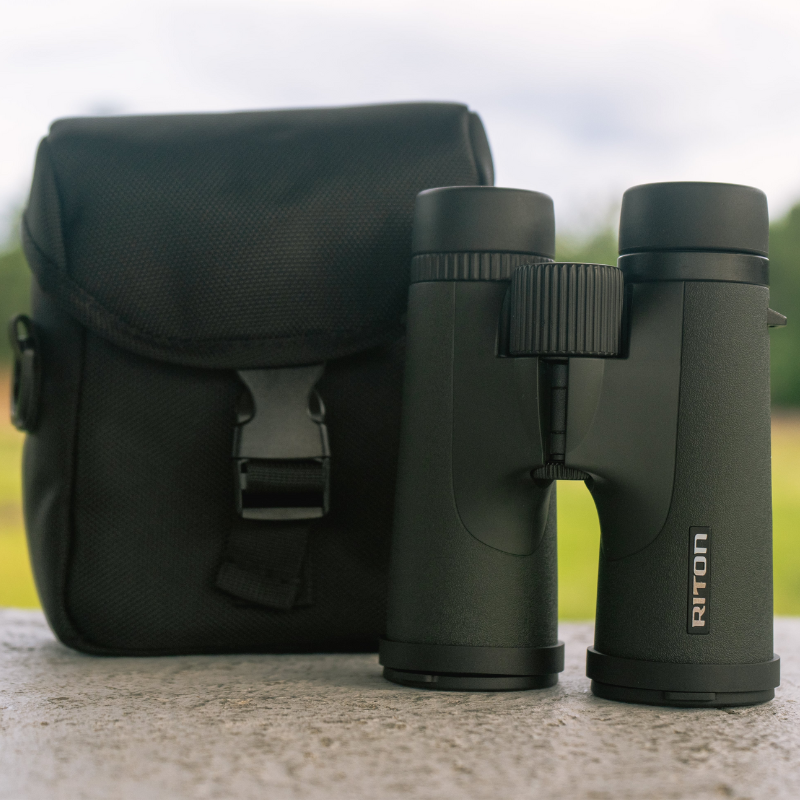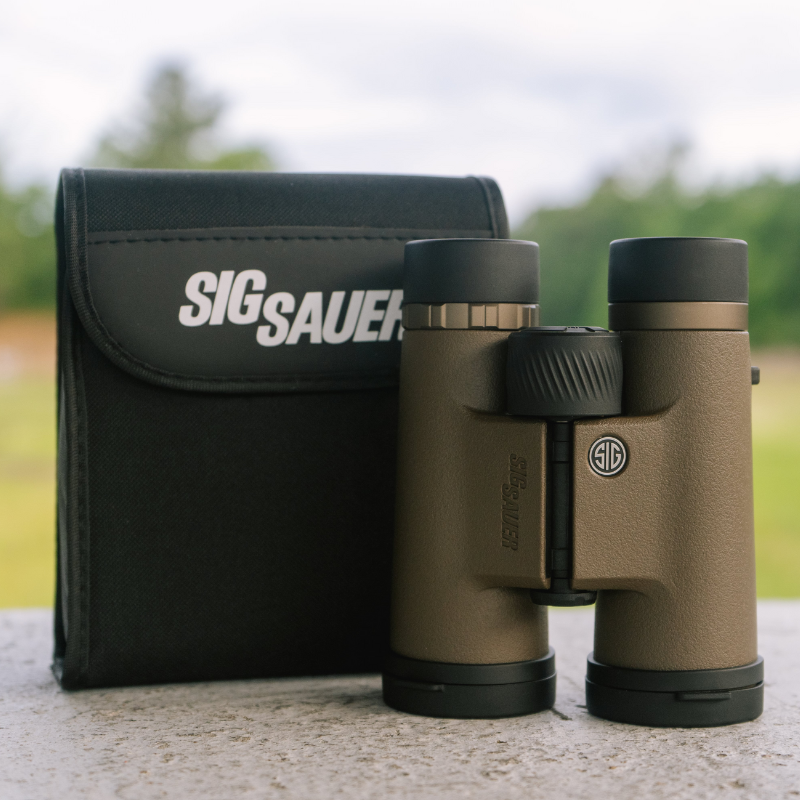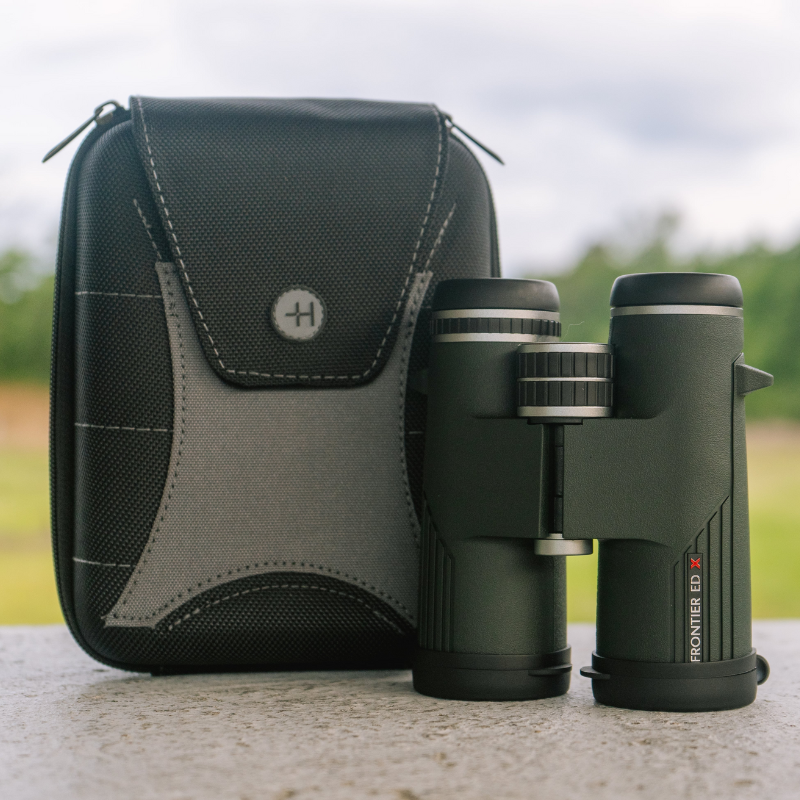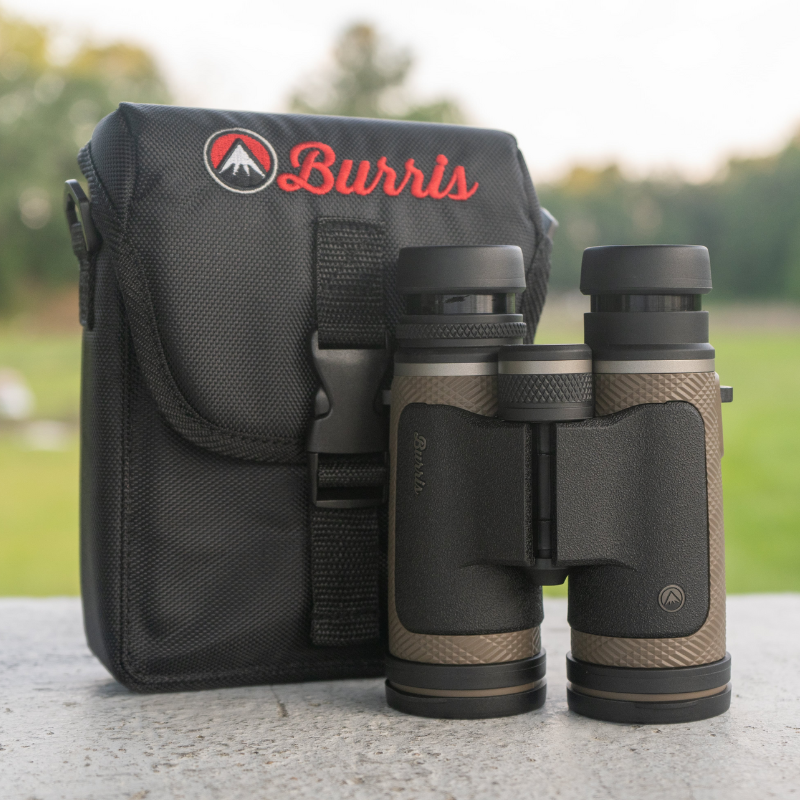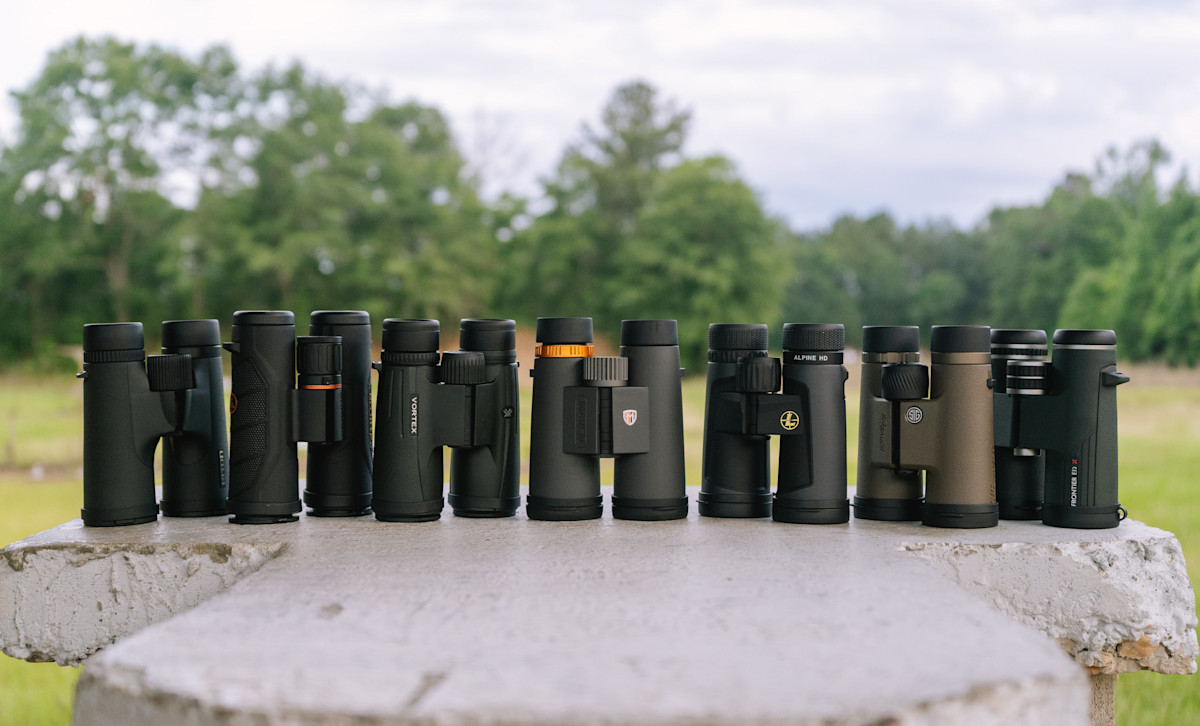
Most hunters agree that binoculars are an important piece of gear. Whether you hunt whitetails in the timber or muleys in steep, open country, you’re better off with a pair strapped to your chest. They can tell you if that buck across the drainage deserves an entire afternoon of stalking. Or they might confirm that you need to move your treestand another 100 yards before your next sit.
However, not everyone needs to count the tines on a distant buck after sunset. Of course, not everyone can afford the type of glass that allows you to do so. For most hunters, an affordable binocular with good controls and decent glass checks all the boxes. And, no, that’s not a lot to ask from a budget optic.
Luckily, the current market offers plenty of options that fit a variety of budgets for hunters or nature observers. Whether you’re spending $250 or $2500, it’s important to understand what you’re getting from your investment. For this review, I tested some of the best binoculars under $500 to see how each performed and what they offer at their respective prices.
Testing the Best Binoculars Under $500
To test the best binoculars under $500, I evaluated eight current options, each from a different manufacturer. I chose binoculars that you can purchase for less than $500 from various retailers, and these prices do not necessarily reflect MSRP.
While all of these options are under $500, some are on the higher end of this range, while others are near the lower end. The head-to-head comparisons and scores help provide an overview of what each option offers under this umbrella and at its respective price.
To evaluate each binocular's low-light capabilities, I observed a white, steel target with a black dot in the center at 300 yards. I then scored each binocular based on their ability to distinguish the black dot in low-light conditions and how long they were actually usable in these conditions. All of these options look similar or "great" during daylight hours, but their true performance becomes evident when the sun sets.
I then tested each binocular's resolution by observing the small lettering on a campaign sign at 100 yards. Each optic received a score based on its ability to parse the letters at this distance, especially in low light.
Scoring System
In order to provide a score for each binocular, I separated the test into three components (optical performance, controls, and value) on a five-point scale, with five being the highest. I then correlated each numerical score to a grade.
Optical Performance
Both the lowlight and resolution testing contributed to each binocular’s optical performance. I also considered coatings, color distortion, or any other image defects.
Controls
While there’s a certain level of subjectivity in this category, I evaluated each binocular on the controls such as how the focus knob, eyecups, barrel design, and diopter adjustment enhances or detracts from the user’s experience, especially as it pertains to hunting. The spongier or grittier the controls, the lower a particular optic scored.
Value
This category considers the previous two as they relate to the price and includes accessories and the manufacturer’s warranty.
Scoring System:
- Excellent: 5
- Great: 4
- Good: 3
- Fair: 2
- Poor: 1
The best binoculars under $500 we recommend
 Maven C.1 10x42mm
Best Overall
|
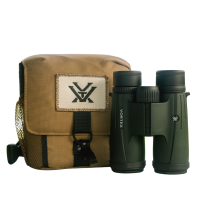 Vortex Viper HD 8x42mm
Runner Up
|
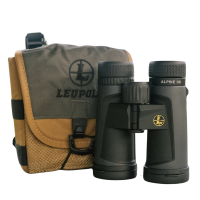 Leupold BX-2 Alpine HD 10x42
Best Value
|
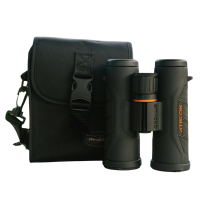 Athlon Cronus G2 UHD 10x42
|
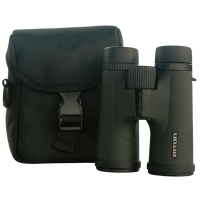 Riton 5 Primal 10x42
|
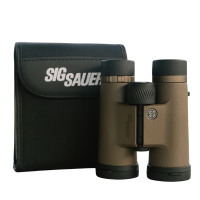 Sig Sauer Canyon HD 10x42
|
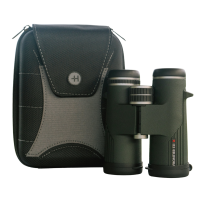 Hawke Frontier HD X 10x42
|
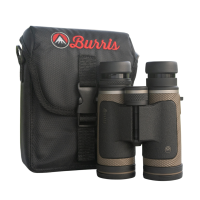 Burris Droptine 10x42
|
|
|---|---|---|---|---|---|---|---|---|
| Score | 11/15 | 11/15 | 9/15 | 10/15 | 6/15 | 8/15 | 8/15 | 9/15 |
| Optical Performance | 4/5 | 4/5 | 2/5 | 3/5 | 2/5 | 2/5 | 2/5 | 3/5 |
| Controls | 3/5 | 3/5 | 3/5 | 3/5 | 3/5 | 3/5 | 3/5 | 2/5 |
| Value | 4/5 | 4/5 | 4/5 | 4/5 | 1/5 | 3/5 | 3/5 | 4/5 |
| Weight | 24.5 oz. | 24.5 oz. | 28 oz. | 27.8 oz. | 26.72 oz. | 23.36 oz. | 25.6 oz. | 26 oz. |
| Price | $425* | $490* | $249* | $499* | $499* | $249* | $380* | $250* |
| Field Notes | Field Notes | Field Notes | Field Notes | Field Notes | Field Notes | Field Notes | Field Notes |
Field notes from the MeatEater Crew
Best Overall
Score: 11/15
Specifications
- Weight: 24.5 oz.
- Single Bridge Design
- Right Barrel Diopter
- Tripod Adaptable
- Lifetime Warranty
- Price: $425
Pros
- Great optical performance
- Edge-to-edge clarity
- Precise, textured focus wheel
- Thumb detents
- Tactile eyecups
Cons
- Only binocular in test that didn't include a case (does include microfiber bag)
Maven’s C.1 barely edged out the Vortex Viper HD for the top spot, but it was the last binocular standing during the low-light performance test. The company’s direct-to-consumer business model allows them to offer good glass, like their C Series ED glass, at a competitive price, since there’s no middle man. Glass in the C.1 10x42mm offers crisp detail and clarity with zero blurring around the edges, and its ability to resolve minute details (like the grooves in steel targets) helped place it at the top.
Controls on the C.1 are tactile and smooth. The large focus wheel turns with precision and doesn’t stray. The three-position eyecups provide plenty of adjustability, no matter your face structure, and set definitively into place. A polymer yet rugged frame keeps the weight relatively light (24.5 oz.) and makes them easy to use with one hand. This feature alone makes it a great option for treestand hunters, especially if you opt for the more nimble 8x42mm.
At $425, the Maven C.1 10x42mm punches above its weight. It’s certainly closer to the $500 mark but well worth the extra saving if you’re shopping in this ballpark. While its optical performance alone makes it one of the best values in this test, the C.1 was the only binocular that didn’t include an actual case or harness (it comes in a microfiber bag). However, its performance, controls, and excellent lifetime warranty compensate for this. Though coolness wasn’t a determining factor in the test, the C.1 certainly would have taken gold in that category too.
Runner Up
Score: 11/15
Specifications
- Weight: 24.5 oz.
- Single Bridge Design
- Right Barrel Diopter
- Tripod Adaptable
- Lifetime Warranty
- Price: $490
Pros
- Great optical performance
- Precise focus
- Thumb detents
- Includes premium case
- Comfortable, tactile eyecups
Cons
- Tough diopter adjustment
The Vortex Viper HD was a close second to the Maven C.1. These two scored similarly in every category, but the Viper HD petered out just before the C.1 in the lowlight test. However, it’s worth noting that the Viper HD was the only 8x binocular in the test. It’s possible that the extra power in the 10x42mm might have taken the crown. Regardless, both of these binoculars offer excellent options at this price point.
Vortex’s Viper HD provided edge-to-edge clarity and minimal color flaring. Other than the C.1, the Viper HD ousted all other binoculars in the lowlight test, despite being the only 8x. Its resolution also performed in stride with the C.1 and provided good clarity even when I glassed into the sun.
Controls on the Viper HD were some of the best. The focus wheel turns precisely and without grit but could be a tad stiffer. The eyecups on the Viper HD were the most comfortable in the test and would provide hours of comfortable glassing. They’re also tactile and easy to adjust, yet they won’t collapse during use. The large thumb detents should fit a wide variety of hand sizes and provide comfortable viewing, though some users might find the barrels a bit slick.
For around $500, the Viper HD also includes a neck strap and GlassPak bino harness (an included case you’ll actually use). Coupled with Vortex’s VIP warranty, this binocular packs a ton of value in a reasonable price.
Best Value
Score: 9/15
Specifications
- Weight: 28 oz.
- Single Bridge Design
- Right Barrel Diopter
- Tripod Adaptable
- Fully Transferable Lifetime Warranty
- Price: $249
Pros
- Great value
- Comfortable, textured eyecups
- Sweet bino harness included
Cons
- Last in the low-light test
- Would benefit from textured barrels
While the Alpine HDs came in last during the low-light test, it still represents a great value at $250. For starters, the large, textured eyecups were some of the more comfortable in the test, and the oversized focus wheel turns without hesitation, though it could be a tad tighter.
During normal conditions, the Leupold BX-2 Alpine HDs provided crisp viewing and colors, but these quickly diminished during low light. However, if you’re looking to buy a new or youth hunter their first pair of binoculars, these are certainly up to that task. With Leupold’s fully transferable lifetime warranty, the accessible price, and an actual bino harness, it’s one of the best binoculars under $500.
Score: 10/15
Specifications
- Weight: 27.8 oz.
- Single Bridge Design
- Center Diopter
- Tripod Adaptable
- Lifetime Warranty
- Price: $499
Pros
- Performed near the top in low-light conditions
- Locking center diopter easy to use
- Textured barrels
- Precise focus
Cons
- Eyecups stray unless in the “up” or “down” positions
- One of the heavier options in test
The Athlon Cronus G2 UHD was a clear third in the lowlight test, falling just behind the Viper HD. Like the Viper HD, the Cronus G2 demonstrated edge-to-edge clarity and minimal color flaring, though detail dropped in low-light settings. Still, it provided crisp images and vibrant colors that kept it in the test’s upper tier.
Controls and design for the Cronus G2 would have scored higher were it not for the eyecups, which only offer two true positions, with no real middle setting. Barrels on the Cronus G2 have an aggressive texturing that looks stylish and provides a firm grip, as opposed to the somewhat “slick” barreled options in the test.
The Cronus G2’s locking center diopter separated it from the rest of the binoculars in the test, which mostly consisted of right barrel diopters. The center locking diopter uses a push-button on top that the user can adjust without breaking position and with one hand. It’s convenient and smooth to operate. While the focus wheel possessed a tinge of sponginess, it still turned precisely and not too freely.
Compared to the other options, the Cronus G2 was one of the heftier binoculars in the test, and its overall length made it feel larger than most. Overall, the Cronus G2 performed near the top of the bunch and makes a strong case as one of the best binoculars under $500.
Score: 6/15
Specifications
- Weight: 26.72 oz.
- Single Bridge Design
- Right Barrel Diopter
- Tripod Adaptable
- Lifetime Warranty
- Price: $499
Pros
- Comfortable eyecups
- Tight focus wheel
- Plenty of eye relief
Cons
- Underwhelming glass
- Most expensive "budget" binocular in test
Riton’s Primal 5 underperformed in every category, especially for the price. At $499 (most expensive in the test), it just made the cut. Its lowlight performance and resolution capabilities tapered off well before the top contenders. The Primal 5 only outperformed the true budget binoculars in the test but at nearly double the price. For these reasons, it scored low in the value category.
Color and brightness in the Primal 5 were decent, though I noticed some peripheral blurring. The right barrel diopter turns smoothly, which the user can adjust without breaking position. Similarly, the focus wheel is tight but spongy, which gave it a "Good" score in the controls category. The eyecups are also comfortable and won't collapse at various settings.
Don’t get me wrong, the Riton Primal 5 definitely outperformed those in the bottom of the test, but to say it’s worth twice as much seems like a stretch.
Score: 8/15
Specifications
- Weight: 23.36 oz.
- Single Bridge Design
- Right Barrel Diopter
- Tripod Adaptable
- Lifetime Warranty
- Price: $249
Pros
- Comfortable eyecups
- Oversized focus wheel
- True "budget" binocular
- Lifetime warranty
Cons
- Edge blurring
- Spongey focus wheel
Of the true "budget" binoculars in the test, the Sig Sauer Canyon HD 10x42s performed spot-on for the $249 price tag. They were just the second binocular off the board during the lowlight test, beating only the Leupold BX-2 Alpine HDs. During normal glassing conditions, the Canyon HDs performed well and exhibited some chromatic aberration. Detail dropped quickly during low light conditions, and the peripherals blurred significantly. Compared to the other options in the test, it became apparent that these inhabit a different tier, despite their “HD” descriptor.
Even though it’s spongey, the oversized focus wheel makes it easy to adjust while glassing, even with gloves. The adjustable eyecups are definitive and some of the most comfortable in the test. The right-barrel diopter doesn’t lock, but it’s so stiff that you won’t need it to.
The Sig Canyon HDs also includes a lifetime warranty. It’s a solid option that includes tripod adaptability and decent glass. For $249, this binocular makes a great first-buy or backup option.
Score: 8/15
Specifications
- Weight: 25.6 oz.
- Single Bridge Design
- Right Barrel Diopter
- Tripod Adaptable
- Lifetime Warranty
- Price: $380
Pros
- Includes rugged case
- Easy to use one-handed
- Precise focus
Cons
- Small, unforgiving eyecups
- Underwhelming low-light performance
- Diopter adjustment requires some force
The Hawke Frontier HD X performed in the middle of the pack, and its resolution and lowlight capabilities were underwhelming. It lost its lowlight vision capabilities well before the Maven C.1, Vortex Viper HD, and Athlon Cronus G2 UHD and just before the Riton Primal 5. It also runs $100-$150 cheaper than these options too. I noticed a significant glare in both barrels (that I didn’t with others), especially while glassing into the sun, perhaps a product of external coatings rather than an internal issue.
In the hand, this binocular felt good. The precise, tight focus made it easy to glass with one hand. The rubberized barrels weren’t slick but didn’t provide any texture, even with the few lines etched into them. They add to the binocular’s aesthetic appeal but don’t contribute much ergonomically.
While the eyecups twist with authority and have definite locking positions, they’re small and hard, which makes glassing uncomfortable. If you have a prominent brow, you might have a similar experience. If you’re on a strict budget, this binocular definitely warrants consideration. At $380, it provides decent glass, a hard case and straps, and a stellar lifetime warranty.
Score: 9/15
Specifications
- Weight: 26 oz.
- Single Bridge Design
- Right Barrel Diopter
- Tripod Adaptable
- Lifetime Warranty
- Price: $250
Optical performance for the Burris didn’t wow during the test, but it performed better than expected for a binocular that runs less than $300. Its low-light capabilities fell in the upper tier of the test, but the resolution and image quality were mediocre.
Aesthetics wise, the Burris Droptine scored some of the most unofficial style points in the test. But the black and tan coatings aren’t just for show. The textured barrels provide plenty of grip. While the eyecups were comfortable, they felt cheap and strayed easily. They also came with enough grease for all the binoculars in the test.
Still, Burris is known for their excellent lifetime warranty, which makes this very accessible price all the more appealing. With a rugged case and great price-to-performance ratio, the Burris Droptine is one of the best binoculars under $500.
How to Choose the Best Binoculars Under $500
Depending on your needs and how often you’ll actually use your binoculars, you might find that an option such as Leupold’s BX-2 Alpine HD suits you just fine. On the other hand, if you’re trying to get the most out of your money and remain under budget, it’s probably worth investing in Vortex’s Viper HD or Maven’s C.1. Both of these options provide great glass and controls for the money, especially considering that they both offer lifetime warranties.
Speaking of warranties, this should also factor into your decision. Most of the premium brands offer great lifetime warranties, but you should still do your homework to understand what “lifetime” entails with each manufacturer. If a brand doesn’t offer a lifetime warranty, it’s worth considering before you pull the trigger.
Final Thoughts
While this isn’t a comprehensive list, it does include several of the best binoculars under $500 currently available. This should help you narrow down your search for a budget optic, but it’s always best to try one in hand. Some brands, like Maven, offer a demo period where you can test a binocular before buying or returning it. You can also visit your local sporting goods store to sample some. Just make sure you do this outside and in lowlight conditions so that you get a true idea of what to expect.

